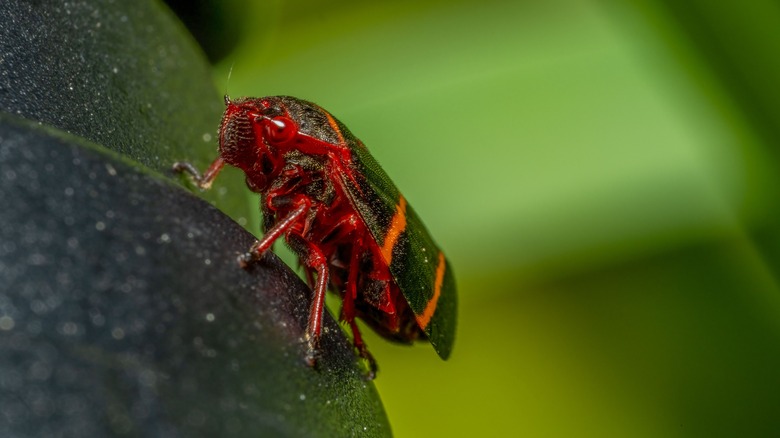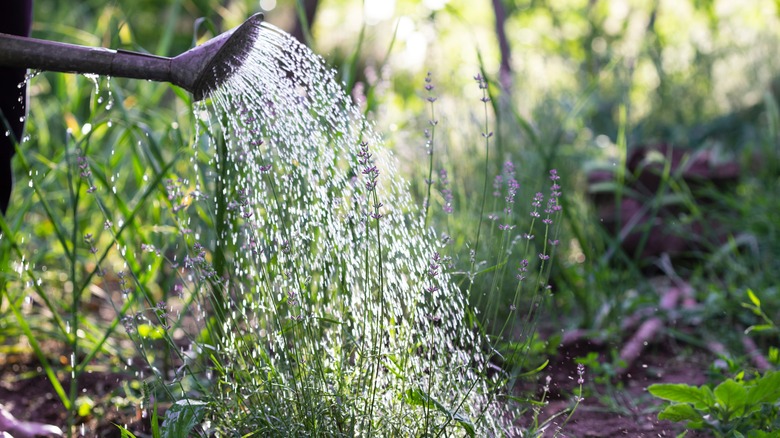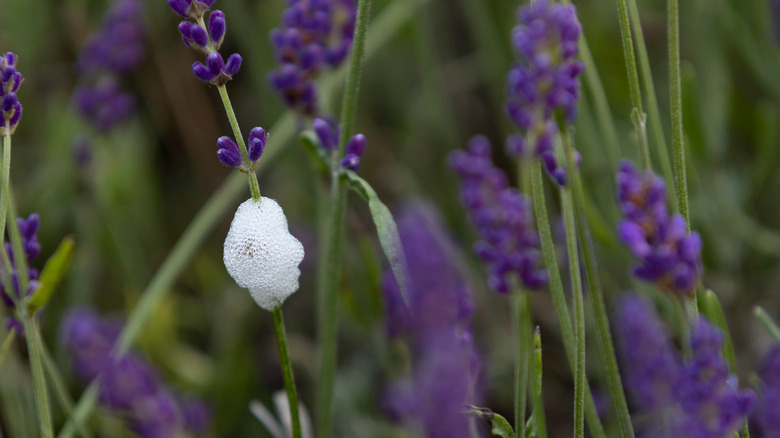If Spittlebugs Are Leaving A Foam-Like Substance On Your Lavender, Don't Panic
Lavender is a favorite in many gardens. It's resilient, fragrant, hardy, and has many uses. However, the spittlebug is one of the most common pests that target lavender. As its name suggests, it leaves a foam-like (spit-like) substance on the plant. Spittlebugs are easily identifiable by their brown, black, and orange-striped coloring, and, of course, the white, foamy substance they leave behind. While this slime may be unsightly, it serves as a protective covering for their nymphs, providing a defense against predators and insulation. The froth protects the nymph from extreme temperatures and provides moisture so that they don't dry out.
Spittlebugs are drawn to grasses, sweet-smelling flowers like roses, fruiting plants like strawberries, and herbs like lavender. You'll notice their bubbly presence during the early spring. As they feed, they pierce the plant, sucking the juices out, leaving behind this substance. While it may be alarming to see this on your lavender plant, there's no need to panic.
How do I get rid of spittlebugs on lavender?
While spittlebugs feed on the sap of plants, they rarely cause harmful damage. Some of the affected parts of the plant may wither and die, but it's usually small sections. In many cases, the goopy substance is more of an unappealing aesthetic rather than damaging, and it rarely compromises the health of lavender plants.
Using a hose is one of the best and most natural ways to remove pests and keep them off your plants. You don't have to resort to chemicals, and the water's stream washes away the foam. Regularly hosing down your lavender can keep spittlebug populations in check, preventing them from spreading. If you decide to try an organic solution, you can use hot peppers, garlic, water, and soap, spraying it liberally on the plant. Although it's not a chemical spray, it still kills spittlebugs and helps prevent re-infestation. But, spittlebugs typically don't harm hard-stemmed plants, especially woody greenery like lavender, and tend to go after softer flora.
How can you control spittlebugs?
Preventing and controlling spittlebugs starts with healthy plants, as they can defend themselves against pests despite injury. When planting lavender, make sure it's healthy. One important aspect is to regularly monitor your garden for pest activity. By keeping an eye on insect damage, you can keep your plant strong by identifying and addressing issues early on. Also, choose disease-resistant species. Certain varieties of lavender, like 'Munstead' and 'Phenomenal,' are hardy and highly resistant to disease.
Another method to prevent and control spittlebugs is to prune damaged, diseased, or dying limbs. Pruning helps reduce the chance of pests attacking and improves the health and vigor of the plant. Planting your lavender in the right location can also contribute to its fitness and prevent spittlebugs. Lavender needs full sun, well-draining soil, proper airflow (not overcrowded by other plants), and regular watering. If planted in a shaded location with poorly draining soil, it will suffer and become easily susceptible to pests and disease. Lastly, clean up as much of the old growth on and around your plants as possible in the fall. This will help prevent spittlebugs since they can overwinter and hide on the previous year's growth. While spittlebugs likely won't harm your plant, if they are bothersome, prevention is the first step.


